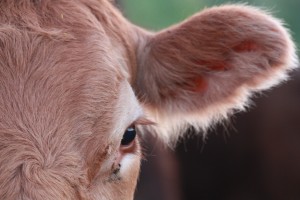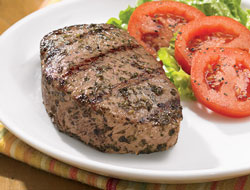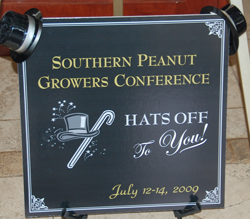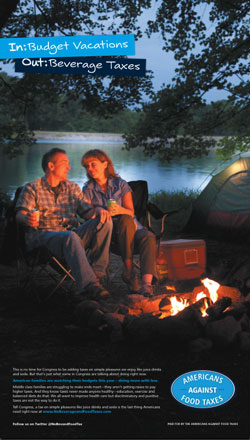 It sounds like our agricultural marketing friends in Alberta are becoming more active. Thanks to Janet Kanters for an update. We’ll see her in Ft. Worth, TX very soon for the combined IFAJ/AMS meeting.
It sounds like our agricultural marketing friends in Alberta are becoming more active. Thanks to Janet Kanters for an update. We’ll see her in Ft. Worth, TX very soon for the combined IFAJ/AMS meeting.
After several years, the Alberta CAMA Chapter hosted its first meeting in April at Olds College in Olds, Alta. Over 60 people attended the networking social and meeting where they learned more about CAMA and discussed an action plan for the newly revived Alberta Chapter. The guest speaker was Steve Warme, Woodruff Sweitzer Calgary, who provided insight on the latest tools and techniques being used for social media marketing, what is currently happening in the agricultural world online and how best to harness current and emerging tools.
Following this successful meeting, a smaller group of CAMA Alberta members held a ‘Rebuilding CAMA Alberta Workshop’ on June 15, with 15 eager ag marketers raring and willing to help get CAMA Alberta back up and running after several years of being MIA.
Much discussion took place around the configuration and number of board members required for the resurrected Chapter. And a new CAMA Alberta slogan was adopted: ‘Building Success in Agri-Marketing’.
Other discussion took place around the constitution, how the executive/board would function, and the cost of yearly membership. There was also general discussion around having a student chapter.
Finally, the group discussed how best to attract members to the organization, via PR/press, education, events and a blog. All ideas were felt to have a positive impact to raise the profile of the Alberta Chapter and drive membership sales.
A CAMA Alberta kick-off barbecue is being planned in the Calgary area for late August 2009. More details to follow as plans evolve.
 Are you geared up for the Cattle Industry Summer Conference in Denver? I’m getting ready and packing my suitcase for an exciting week with beef cattle raisers from around the country. There are so many things to see in do while at the conference, and I will be working with Cindy to cover the Cattlemen’s Beef Board meetings and events throughout the week.
Are you geared up for the Cattle Industry Summer Conference in Denver? I’m getting ready and packing my suitcase for an exciting week with beef cattle raisers from around the country. There are so many things to see in do while at the conference, and I will be working with Cindy to cover the Cattlemen’s Beef Board meetings and events throughout the week.
 If you like to marinade your beef before cooking it then you might want to think Schwan’s courtesy of The
If you like to marinade your beef before cooking it then you might want to think Schwan’s courtesy of The  The theme of the 11th annual conference is really a tribute to the U.S. peanut industry for overcoming adversity in 2009.
The theme of the 11th annual conference is really a tribute to the U.S. peanut industry for overcoming adversity in 2009. “Farmers are really resilient and even though it wasn’t a crisis they caused themselves, we have made it through,” Don says. “And the really good news is that our May 2009 numbers for peanut butter were 13 1/2 percent over what we did in May 2008.”
“Farmers are really resilient and even though it wasn’t a crisis they caused themselves, we have made it through,” Don says. “And the really good news is that our May 2009 numbers for peanut butter were 13 1/2 percent over what we did in May 2008.” It sounds like our agricultural marketing friends in Alberta are becoming more active. Thanks to Janet Kanters for an update. We’ll see her in Ft. Worth, TX very soon for the combined IFAJ/AMS meeting.
It sounds like our agricultural marketing friends in Alberta are becoming more active. Thanks to Janet Kanters for an update. We’ll see her in Ft. Worth, TX very soon for the combined IFAJ/AMS meeting.
 I don’t know what you think about it but it sure seems to me like we’ve got a government that thinks that the answer to every problem in our society can be fixed with a new program and new taxes. I’m just wondering where in the world they think that money is going to come from.
I don’t know what you think about it but it sure seems to me like we’ve got a government that thinks that the answer to every problem in our society can be fixed with a new program and new taxes. I’m just wondering where in the world they think that money is going to come from. U.S. Wheat Associates welcomed Shawn Campbell as the new Assistant Director, West Coast Office, Portland, OR, July 6, 2009.
U.S. Wheat Associates welcomed Shawn Campbell as the new Assistant Director, West Coast Office, Portland, OR, July 6, 2009.  I was very saddened to learn of the passing away of Jack Eberspacher, Ag Retailers Association. Cindy and I knew Jack first when he led what is now the National Sorghum Producers. We’ve had the opportunity to interview him and share good times and fellowship many times and he will be sorely missed. Here’s a
I was very saddened to learn of the passing away of Jack Eberspacher, Ag Retailers Association. Cindy and I knew Jack first when he led what is now the National Sorghum Producers. We’ve had the opportunity to interview him and share good times and fellowship many times and he will be sorely missed. Here’s a